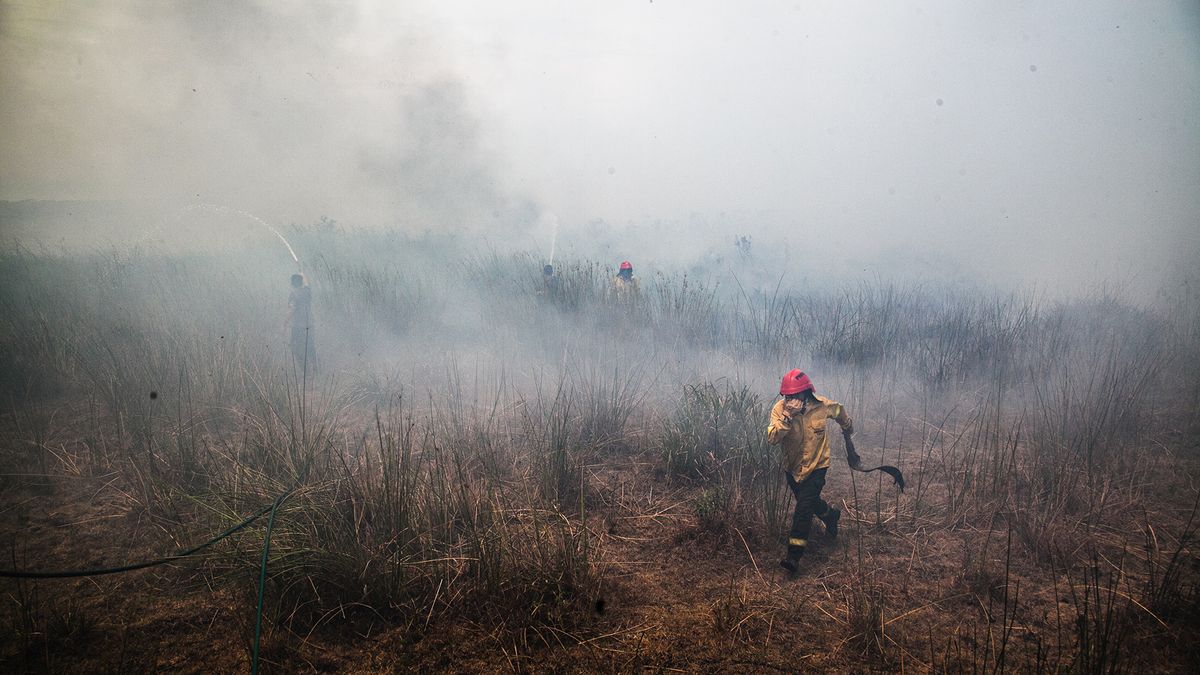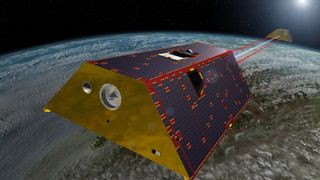'A harbinger of what's to come:' NASA satellites show massive drop in global freshwater levels
NASA satellites discovered that Earth's surface has lost enough water to empty Lake Erie two and a half times since 2015. And the problem could be here to stay.

Earth's total fresh water has plummeted to an alarming new low, and it could be a sign that climate change is pushing the world into a dangerous phase of global drying, according to a new study.
Since 2015, our planet's lakes, rivers and aquifers have lost 290 cubic miles (1,200 cubic km) of fresh water, the equivalent of emptying Lake Erie two and a half times.
This drop coincided with a 2014 to 2016 period of El Niño warming. Scientists typically expect freshwater levels to rebound after the climate oscillation ends, but satellite measurements, made up to 2023, reveal that the freshwater levels have yet to recover — and may never come back.
"We don't think this is a coincidence, and it could be a harbinger of what's to come," study lead author Matthew Rodell, a hydrologist at NASA's Goddard Space Flight Center, said in a statement.
The researchers published their findings Nov. 4 in the journal Surveys in Geophysics.
Related: Will the US run out of water?
As climate change causes temperatures to rise around the globe, water evaporates more readily from its surfaces, and the atmosphere gains an ever increasing capacity to absorb it. This means that when downpours do occur, they are more torrential — dumping more rain in faster and more powerful storms that are more likely to run off than to seep into drier and more compact surfaces.
Sign up for the Live Science daily newsletter now
Get the world’s most fascinating discoveries delivered straight to your inbox.

This issue, alongside destructive land use and the mismanagement of water resources, means that nearly 3 billion people and over half of global food production are facing "unprecedented stress" on their water systems, according to one recent study.
To investigate the extent of our planet's drying, the researchers behind the new study turned to two pairs of satellites that orbit above the North Pole. The satellites measured water levels by detecting the minute fluctuations that water's mass produces to Earth's gravitational field.
By precisely measuring the changes to the tugs of Earth's gravity from 2015 to 2023, the scientists found that the 290 cubic miles of water that was lost from the world's surface during the last El Niño never returned, and that 13 of the world's 30 most intense droughts seen by the satellites took place since January 2015.
The result is an ominous one. The satellites used in the study are set to produce six more years of readings before they are retired. Whether fresh water will rebound to pre-2015 levels during that period, stay at the same value or continue to decline remains unclear. But the researchers are far from hopeful.
"There is much debate and little consensus about how patterns of wetting and drying will manifest in a warming world," they wrote in the study. "Hence, it is difficult to evaluate whether the observed patterns are consistent with predictions and likely to persist."

Ben Turner is a U.K. based staff writer at Live Science. He covers physics and astronomy, among other topics like tech and climate change. He graduated from University College London with a degree in particle physics before training as a journalist. When he's not writing, Ben enjoys reading literature, playing the guitar and embarrassing himself with chess.
Most Popular

